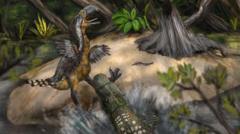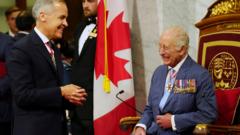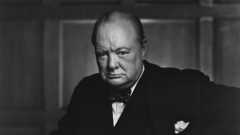Cedar, a blind moose calf recovering from a leg injury, has become a permanent resident at Holly's Haven, a wildlife rescue center nestled in rural Ottawa. The calf, now around a month and a half old, was brought to the facility after his mother’s unfortunate demise. In an environment already bustling with other rescued wildlife, Cedar's unique challenges have prompted the center's founder, Lynne Rowe, to quickly adapt her knowledge to meet the calf's specialized needs.
At Holly's Haven, a variety of animals, including coyotes, porcupines, raccoons, and skunks, coexist in rehabilitation. However, Cedar's circumstances set him apart. Unlike most animals that the center aims to rehabilitate and return to the wild, Cedar's visual impairment means that he cannot be released. Experts, including veterinarians and wildlife rehabilitators, have determined that he would face extreme vulnerability in the wild, where predators such as coyotes or wolves would pose a significant threat.
Cedar's best chance is to gain some vision in his right eye, but even that wouldn't suffice for a safe return to his natural habitat. Rowe reflects on Cedar’s condition while feeding him willow branches, noting the weight difference as he grows—currently weighing 30 kilograms but potentially reaching close to 700 kilograms as an adult.
The community surrounding Holly's Haven is now faced with the important task of reimagining Cedar’s future, as the center now adopts a long-term care approach akin to what they implemented for Holly, the raccoon after whom the center is named. Despite the challenges, the hope remains that Cedar can thrive in this dedicated sanctuary, surrounded by the care that will ensure he lives safely for years to come.
At Holly's Haven, a variety of animals, including coyotes, porcupines, raccoons, and skunks, coexist in rehabilitation. However, Cedar's circumstances set him apart. Unlike most animals that the center aims to rehabilitate and return to the wild, Cedar's visual impairment means that he cannot be released. Experts, including veterinarians and wildlife rehabilitators, have determined that he would face extreme vulnerability in the wild, where predators such as coyotes or wolves would pose a significant threat.
Cedar's best chance is to gain some vision in his right eye, but even that wouldn't suffice for a safe return to his natural habitat. Rowe reflects on Cedar’s condition while feeding him willow branches, noting the weight difference as he grows—currently weighing 30 kilograms but potentially reaching close to 700 kilograms as an adult.
The community surrounding Holly's Haven is now faced with the important task of reimagining Cedar’s future, as the center now adopts a long-term care approach akin to what they implemented for Holly, the raccoon after whom the center is named. Despite the challenges, the hope remains that Cedar can thrive in this dedicated sanctuary, surrounded by the care that will ensure he lives safely for years to come.


















